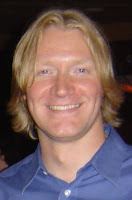With upgrading the photography gear, I’ve also learned that not all memory is created equal. There’s a lot more to it than just size. In particular, SD (Secure Digital) cards in SD, miniSD, and microSD card sizes come with different speed ratings. The speed is important for photos and videos as it needs to be fast enough that the memory card can be written to without the camera stalling or freezing trying to wait for the write process. There are class 2, 4, and 6. I have class 6 cards in both cameras. The SD cards also come in different types. The SD card is available up to 4 GB, the SDHC is available up to 32 GB, and the SDXC will be theoretically available up to 2 TB (terabytes)! Wikipedia has a nice explanation on all the details.
Memory has both read and write speeds, which may be different, along with lots of other specifications. USB memory sticks are also not created equal. The speeds of USB sticks aren’t as generally published, as they are for SD cards, but try to find USB sticks that have read and write speeds close to 30 MB/sec, which will be close to what a portable hard drive would read and write at across USB 2.0. One of the fastest USB sticks I’ve run across is the OCZ Rally2 Turbo USB 2.0 Flash Drive, but I’m sure others can be found with a little surfing.
Saturday, September 19, 2009
Not all memory is created equal
Posted by
Mechanicaldan
at
1:12 AM
0
comments
![]()
Upgrading the photography gear
With over 6000 pictures taken on my Sony DSC-P8 digital camera, it’s had a very long life. I bought it in 2003, and it’s lived with a 256 MB memory stick the entire time. It’s a 3.2 megapixel, with a tiny little 1.5” LCD screen on the back and a view finder to look through. It’s worked well, but my one complaint the whole time I’ve owned it is that unless you hold it really, REALLY still the picture will come out blurry. I’ve learned to shoot clear pictures with it, but anyone who has taken a picture during a party with it, or someone taking a picture of Dena and I while travelling has managed to take a fuzzy picture. During the first week Andrew was in the hospital, I took a few pictures and after seeing about half of them blurry, decided it was time to upgrade, as I just don’t want pictures of my son to be blurry and ruined. I’ve actually been looking for a replacement for some time, but nothing stood out until just now. Samsung has released the very first digital camera with a second forward facing display. This immediately caught my attention, as I take a lot of pictures of Dena and I when we’re travelling with my arm out stretched. We normally have to take several pictures to get the shot composed correctly. Now, I’ll just be able to look at the front screen and compose the shot the first time. This camera is the Samsung TL225 in the US and ST550 in the UK. Some of the other features are 3.5” touchscreen on the back, smile shutter (which is cool), dual image stabilization, microSD card, and is HD movie capable. I also love how easy it can be to use, as there are just 4 normal buttons: power, capture, zoom, and review. The touchscreen is nice to use and the camera has plenty of advanced features I’m sure I’ll grow into.
About two months back we also invested in a camcorder, to capture all the fun and special moments when our son arrived. After doing a bunch of research and comparing, I decided on a Canon HF100. I wanted a Full HD camcorder, but with memory being as cheap as it is, I wanted to record on SD card. This would be cheap and easy to upgrade later. I also did not want a built in hard drive, as this would likely be the first thing to break at some point in the future. The camcorder is plenty small, but not too small as to make it difficult to hold. I’ve just started to use it, capturing both videos and stills, and the built in still camera actually takes better pictures than the old DSC-P8. I have Adobe Premier software to burn the HD DVDs, but I’ve been reformatting Dena’s laptop, and the CD/DVD drive broke (good timing at 2 months before the warranty expired) midway through the reformat, so the movie making and DVD buring is on pause until the new drive arrives. The extended length battery is a must as the stock one lasted just barely 1 hour, and the extended battery will last over 4 hours.
Posted by
Mechanicaldan
at
12:20 AM
0
comments
![]()
Friday, September 18, 2009
Andrew_Stirling_30_Aug_2009
I had only planned to take 2 weeks off of work, but since the first 2 were spent in the hospital, I took another week off of work, and the three of us have been adjusting to life at home fairly well. Dena is breastfeeding, and Andrew is sleeping 3-4 hours at a time during the night, which means that we are not getting the sleep we used to. I'm amazed at how many diapers (nappies in the UK) he fills. We went through over 27 diapers during the first 4 days at home. Andrew is now just at 11 pounds and completely adorable. He only seems to cry when he's hungry, needs to be burped, needs his diaper changed, or just wants to be held, hugged and cuddled; other than that, he sleeps.
Posted by
Mechanicaldan
at
11:22 PM
0
comments
![]()
